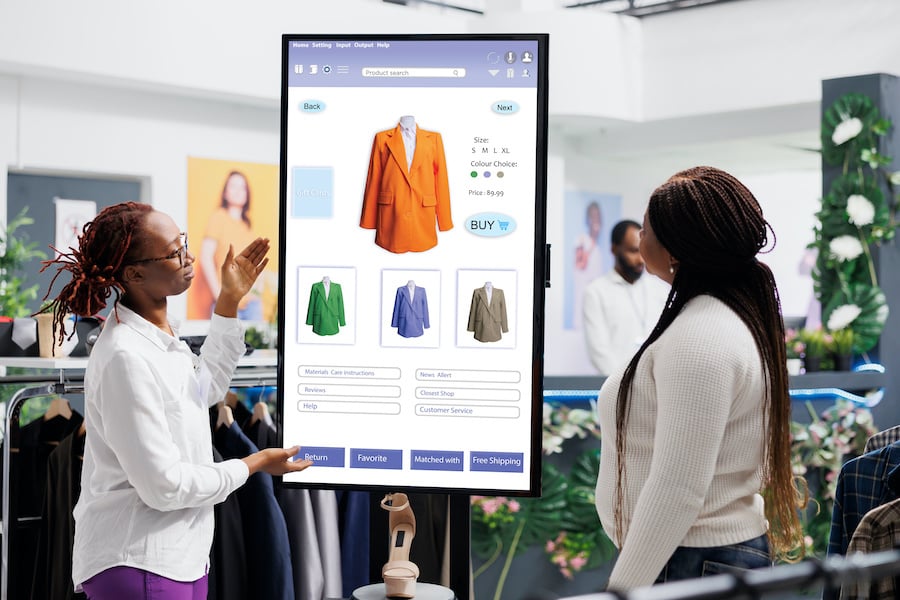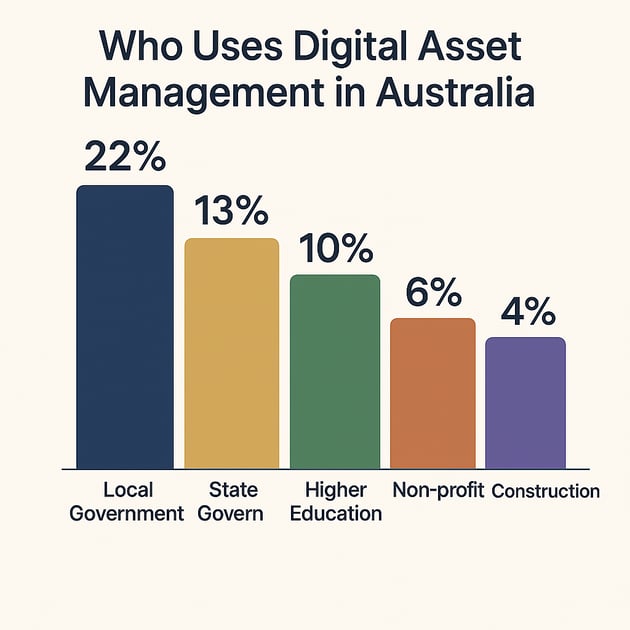How to use LLM in digital asset management (DAM)
June 13, 2024 •Sushmitha Venkatesh

Managing vast amounts of digital content efficiently is a critical challenge for organisations these days. The advent of Large Language Models (LLMs) has introduced new possibilities in the world of Digital Asset Management (DAM).
By harnessing the power of advanced AI, LLMs can transform how digital assets are organised, accessed, and utilised, offering unprecedented levels of automation, accuracy, and personalisation. AI in DAM is reshaping traditional management practices, making it easier to navigate large libraries of digital assets with smarter, more intuitive tools. This integration not only streamlines workflows but also enhances user experience, making it easier to manage and leverage digital assets effectively. In this post, we will explore the capabilities of LLMs and their transformative impact on DAM systems.
What is LLM?
A Large Language Model (LLM) is a type of artificial intelligence (AI) model specifically designed to understand and generate human-like text based on the input it receives. These models are trained on vast amounts of text data, typically using deep learning techniques, to learn the patterns and relationships within language.
Large Language Models, such as GPT-3 (Generative Pre-trained Transformer 3), can perform a wide range of natural language processing tasks.
In other words, Large Language Models (LLMs) are a subset of artificial intelligence (AI) designed to understand and generate human-like text based on vast amounts of data. These models, such as OpenAI's Chat GPT-4, are trained on diverse datasets that encompass various languages, contexts, and styles. LLMs leverage deep learning techniques, specifically neural networks, to predict the next word in a sentence, enabling them to perform a wide range of language-related tasks, from text generation and translation to sentiment analysis and summarisation.
The role of LLM's in modern technology
Have you noticed how AI content is gradually finding its place in both the creative world of artistry and the practicalities of day-to-day business operations?
It's fascinating to witness how technology is weaving itself into the fabric of our work lives, enhancing creativity for artists while streamlining processes for businesses. From generating artwork to automating repetitive tasks, AI is revolutionising the way we approach work, blurring the lines between human ingenuity and machine intelligence.
LLMs have changed the way we interact with technology, providing capabilities that were previously unattainable. They can understand context, generate coherent text, answer questions, and even engage in meaningful conversations. This has opened new avenues in fields like customer service, content creation, and data analysis. Their ability to process and generate human-like text makes them invaluable tools for enhancing user experiences and automating complex linguistic tasks.
What is digital asset management (DAM)?
Digital Asset Management (DAM) platforms are essential tools for organisations to store, organise, manage, and distribute digital assets such as images, videos, documents, and other media files. DAM systems streamline workflows, improve efficiency, and ensure that digital assets are easily accessible and properly utilised. They provide a centralised repository where assets can be categorised, tagged, and retrieved based on metadata, ensuring consistency and control over digital content.
Integrating LLM and DAM
Integrating LLMs into DAM platform can significantly enhance their functionality and user experience.
Here are several ways LLMs can be utilised within a DAM framework:
-
Automated Metadata Generation: LLMs can analyse digital assets and automatically generate descriptive metadata, such as tags, keywords, and summaries. This reduces the manual effort required to catalog assets and improves searchability.
-
Content Analysis and Categorisation: LLMs can examine the content of digital assets and categorise them based on their context and subject matter. This ensures that assets are organised logically and can be easily found when needed.
-
Enhanced Search Capabilities: By understanding natural language queries, LLMs can improve search functionality within DAM systems. Users can perform more intuitive searches, and the system can return more relevant results based on contextual understanding.
-
Personalised Content Recommendations: LLMs can analyse user behaviour and preferences to provide personalised content recommendations. This is particularly useful in marketing and content management, where delivering the right content to the right audience is crucial.
-
Language Translation and Localisation: LLMs can translate digital assets into multiple languages, facilitating global collaboration and ensuring that content is accessible to a wider audience. They can also adapt content to different cultural contexts, enhancing its relevance and impact.
-
Automated Content Creation: Leveraging LLMs, DAM systems can assist in creating new content based on existing assets. For instance, generating promotional texts, social media posts, or reports by analysing and summarising relevant assets.
Application of LLM within Canto DAM
Integrating a Language Model (LLM) with a Digital Asset Management (DAM) system like Canto can greatly enhance its capabilities for metadata tagging, content analysis, search optimisation, and content recommendation. Here are several methods to integrate LLM into DAM:
Metadata Tagging and Enrichment:
- Use LLM to automatically tag assets with relevant metadata such as keywords, categories, descriptions, and sentiments.
- Implement Natural Language Processing (NLP) techniques to extract meaningful information from asset descriptions, titles, and content.
- Train the LLM on your specific domain to ensure accurate tagging and enrichment.
Note: Smart AI Tagging is currently a great example of Canto AI integration, but not quite the same as LLM due to it only creating tags of what is seen in the image rather than existing metadata and business prompts.

Content Analysis and Classification:
- Integrate LLM to analyse the content of assets such as images, videos, and documents for content classification, sentiment analysis, and topic extraction.
- Implement deep learning models for image and video analysis to extract features and insights from visual content.
- Use LLM to categorise assets into predefined taxonomies or custom classifications based on their content.
Search Optimisation:
- Enhance DAM search capabilities by utilising LLM-generated metadata to improve search relevance and accuracy.
- Implement semantic search techniques to understand the context of user queries and retrieve more relevant results.
- Use LLM to generate alternative search terms and synonyms to expand search coverage and improve discoverability.
Note: Canto has recently added Visual AI search which allows for integration learning of the stored content in your instance. A much higher form of AI learning for your broad or specific search terms.
Content Recommendation:
- Leverage LLM to analyse user behaviour, content interactions, and preferences to provide personalised content recommendations.
- Implement recommendation algorithms that utilise LLM-generated metadata to suggest related assets or content items to users.
- Use collaborative filtering techniques to recommend assets based on similar user preferences and behaviour patterns.
Workflow Automation:
- Integrate LLM into DAM workflows to automate repetitive tasks such as metadata tagging, content analysis, and content routing.
- Implement rule-based systems or machine learning models to automatically trigger actions based on LLM-generated insights and metadata.
- Use LLM to identify duplicate or similar assets and streamline content management processes.
Continuous Learning and Improvement:
- Implement feedback loops to continuously train and improve the LLM model based on user interactions, corrections, and feedback.
- Utilise active learning techniques to prioritise labelling efforts and focus on areas where the LLM performance can be improved.
- Monitor LLM performance metrics such as accuracy, precision, and recall assessing model performance and identify areas for improvement.
- By integrating LLM into DAM systems using these methods, organisations can unlock the full potential of their digital assets, improve content discoverability, streamline workflows, and deliver more personalised user experiences.
Benefits of LLM Integration in DAM
The integration of LLMs into DAM systems offers numerous benefits, including:
- Increased Efficiency: Automating metadata generation, content categorisation, and other routine tasks reduces the time and effort required from users.
- Improved Accuracy: LLMs enhance the accuracy of metadata and search results by understanding the context and content of digital assets more deeply.
- Enhanced User Experience: Intuitive search capabilities and personalised recommendations make it easier for users to find and utilise digital assets effectively.
- Scalability: LLMs enable DAM systems to handle larger volumes of digital assets efficiently, ensuring consistent performance as the volume of assets grows.
Conclusion
The integration of Large Language Models into Digital Asset Management systems represents a significant advancement in the way organisations manage and use their digital content. By leveraging the capabilities of LLMs, DAM systems can offer enhanced functionality, improved efficiency, and a better overall user experience. As AI and machine learning technologies continue to evolve, the synergy between LLMs and DAM systems will likely lead to even more innovative and effective solutions for digital asset management.
Other DAM topics you might find interesting
Australian retailers are producing and publishing more content than at any other point in history. Product images, Reels, rich-media ads, TikTok...
Read MoreIf you ask me what matters most in 2025, the answer is simple—Company Culture. It's something many talk about, but few truly understand until they...
Read MoreFor over 30 years, databasics has been Australia’s most trusted name in digital asset management. And today, we’re proud to say it loud:
Read MoreOver the past 12 months, databasics has expanded our customer base by nearly 30%, consolidating our position as the leading provider of Digital Asset...
Read More

.png?width=800&height=368&name=DAM%20and%20AI%20book%20cover%20insert%20%20(2000%20x%201080%20px).png)




